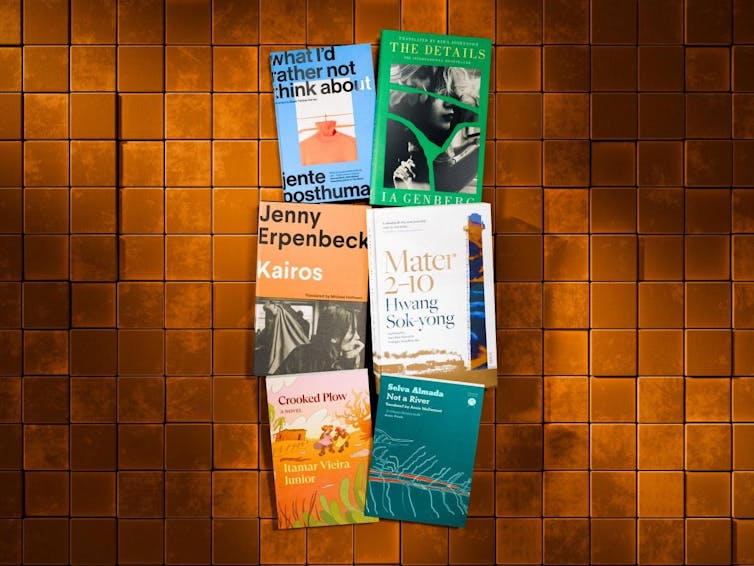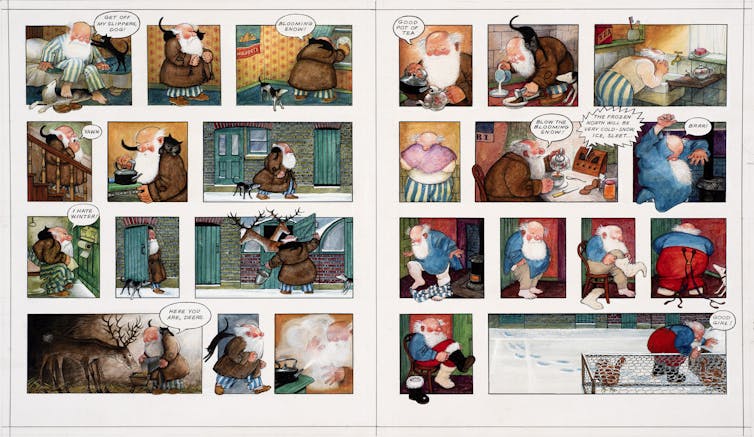This article was first published in our email newsletter Something Good, which every fortnight brings you a summary of the best things to watch, visit and read, as recommended and analysed by academic experts. Click here to receive the newsletter direct to your inbox.
Pass the smelling salts and loosen those corsets! Bridgerton returns for a third series of high-society scandal and intrigue – not to mention a generous serving of chandeliered opulence, eye-popping frocks and swooning lovers.
Shonda Rhimes’ Regency-adjacent extravaganza was a huge hit when it dropped on Netflix in 2020. It certainly revved up the rather predictable fare of period drama by blithely ignoring rules and conventions (hello female agency, goodbye racial prejudice) in favour of a more modern sensibility. Translation: Bridgers = Jane Austen with v sexy romping. Chaste it was not, Mrs Bennett.
Two seasons and a spin-off later, the much-anticipated third series of scheming and romancing will no doubt ensure that viewers require a quiet lie down in a darkened room afterwards.
But in this season of Bridgerton, something else is afoot. Unlike the earlier, steamier seasons, we witness a slightly more serious, mature and emotionally complex storyline emerging – one that is based around identity, self-acceptance and romantic attachment. Poor Penelope Featherington is entering her “third year on the marriage mart with no prospects to show for it”.
In the hierarchical world of early 19th-century society, marriage was a pragmatic undertaking, vital for securing financial stability and status. Spinsters were dependent, stigmatised and relegated to the periphery of polite society – demonised by patriarchal attitudes that persist even, dare it be said, in the 21st century. Bridgerton may still set hearts racing, but it has become more grown up too.
Creepy Tudor murder-mystery
More historical drama this week: this time Disney Plus’s Tudor detective mystery Shardlake, based on Dissolution, the 2003 debut of novelist C.J. Sansom, who died at the end of April. Intriguingly, Shardlake leads us into an enclosed world of corruption and murder as Henry VIII’s Reformation threatens the end of a thousand years of monastic life in England.
“Crookback” lawyer Matthew Shardlake – acutely intelligent but scorned for his disability – is sent to the monastery of St Donatus to investigate when a royal commissioner surveying the community for Thomas Cromwell and the king is found beheaded in a crypt.
Cue a broodingly Gothic atmosphere with mist sweeping in from the marshes as torches flicker and black-clad monks glide around silently, their hooded faces hidden. Over four episodes, the body count rises as Shardlake hunts down the evidence that will seal St Donatus’s fate. Filmed in Hungary and Romania, the forbidding castles standing in for medieval England, complete with looming watchtowers and secret passageways, add to the mood of dread and fear. Settle in and watch as the underestimated Shardlake untangles the web of evil.
Next week sees the announcement of the International Booker Prize – awarded to the finest fiction written in languages other than English – which rightly acknowledges the important role of translators.

Our academic experts review this year’s crop of six titles, which range from a pared-down poetic tale of prejudice, vendetta and score-settling in rural Argentina to the heartbreaking history of the separated Korean peninsula, told through the story of three generations of railway workers. There’s also a fine example of COVID fiction from Sweden, which explores what it means to be human; a Dutch tale of sibling grief after the suicide of a twin; a doomed love affair set against the backdrop of the last years of the German Democratic Republic; and a harrowing, multi-voiced novel that portrays the present-day legacies of Brazil’s colonial past.
Each of these excellent nominees underscores why it is so worthwhile to read beyond our own language and cultural experience, to see and feel the world from a different perspective. And thanks to the exceptionally skilled translators who communicate the nuances of other languages – and the imagery, ideas and expression they contain – we can hear the voices of others. Look out for the winner when the announcement is made on Tuesday, May 21.
Read more: International Booker prize 2024: six expert reviews of the shortlisted books
Celebrating art and comic-strip genius
This year marks the 200th anniversary of one of the UK’s most beloved art institutions: the National Gallery on London’s Trafalgar Square, home to more than 2,300 works spanning the great traditions of European art up to 1900. The gallery is marking two centuries with a series of events in London and exhibitions across the country.
To join in the celebrations, we begin a series of articles this week focusing on particular works in the gallery and the stories they tell, from Giovanni Girolamo Savoldo’s Mary Magdalene, to a Victorian painting of the gallery itself by a little-known artist. You can look forward to further explorations of the gallery’s extraordinary collection in the weeks to come.
Read more: National Gallery 200: Giovanni Girolamo Savoldo’s Mary Magdalene is a powerful piece of storytelling

Finally, to the work of a great artist on a more humble, everyday scale: the much-loved Raymond Briggs, who died at the age of 88 in 2022. Briggs, the author-illustrator of some of the most wonderful books from my childhood – Father Christmas, Fungus The Bogeyman, The Snowman – is being honoured with an exhibition of his work at the Ditchling Art + Craft Museum in Sussex, close to where he lived.
Besides his shock-value humour – including rendering Father Christmas as a grumpy Santa (on the loo!) and taking great glee in the revolting habits of a slimy, foul-smelling green creature – Briggs must be remembered as a pioneer of the comic strip.
He was among the first illustrators to disregard the trashy reputation that plagued comic strips and use them to tell stories for children. In using beautifully realised comic-strip storytelling, Briggs did a great deal to rehabilitate comics as an acceptable form of children’s literature. The magic is in the tiniest of humdrum details, and a delight to behold.
Read more: Raymond Briggs: new exhibition reveals bloomin' brilliant life and work of much-loved cartoonist

